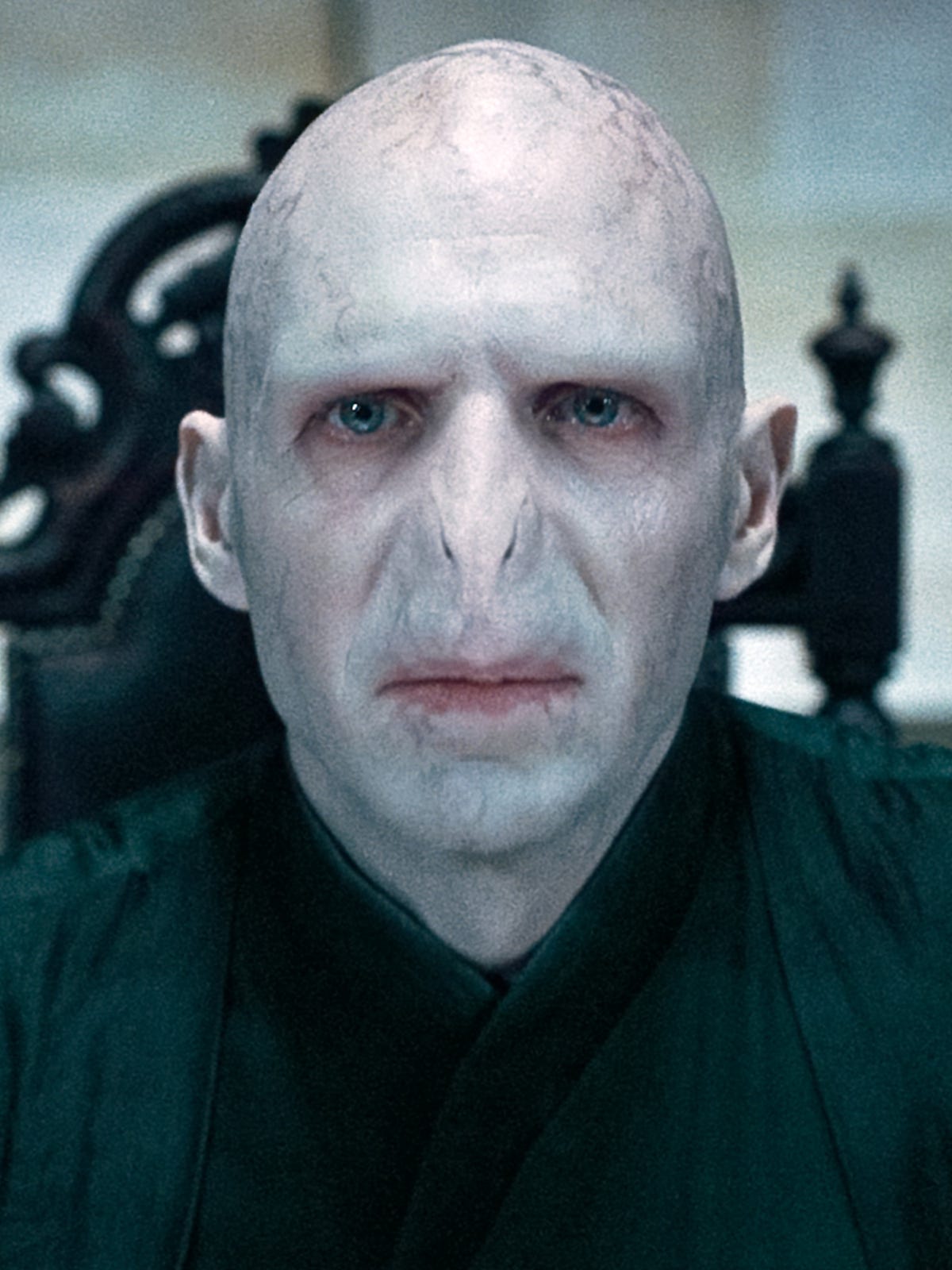Breaking: Frankenwatch Speedmaster Is The Work Of Lord Voldemort
"DON'T say his name." – Hagrid
I think we all know the back-story by now. In November of 2021, a very vintage Omega Speedmaster, reference no. 2915-1, with a so-called “tropical” brown dial, sold for $3.4 million at Phillips. At the time, the listing described the watch as follows:
“The present watch displays an exceptional ‘tropical’ dial that has aged to a vibrant milk-chocolate shade. The brown tone is not only rich and vivid, but it is also incredibly even throughout. Moreover, the luminous material on both the dial and hands have aged to an attractive golden tone.”
Now, of course, everyone knows that this particular watch was misrepresented and worse, it was a deliberate misrepresentation; but by whom?. The story broke on Bloomberg and Neue Zürcher Zeitung (an internationally recognized paper of record in Switzerland) and the gist of if is that the watch was put together with parts from other watches (as well as faked movement parts). Every single news outlet, including sources of record like Bloomberg and NZZ, have declined to name names, for reasons we’ll get into later. You’d think though, the way that people are avoiding naming names, especially when the persons alleged to be responsible are very clearly indicated by their former positions at Omega, that the alleged malefactors were Lord Voldemort or something.
The story was picked up by pretty much every watch enthusiast website including HODINKEE, Fratello, and Watches By SJX, and Chris Hall at The Fourth Wheel has weighed in as well. The story has also been run by CNN.
Of course the first person to call out the watch as problematic was Perezcope, the well-known Instagram gadfly and thorn in the side of auction houses, several brands, and the mainstream watch press in general. His analysis was detailed, and as it turns out, accurate, and also completely ignored until NZZ and Bloomberg picked up the story.
The whole thing raises a number of interesting questions.
The first is of course that everyone seems to read Perezcope but nobody (including me) in the watch press seems to want to publicly acknowledge his analyses. He’s an inexhaustible and usually quite accurate researcher (although he has his blind spots like anyone else) and while surfacing his research has often seemed like more trouble than it’s worth to the mainstream watch press, despite the fact that he can be irascible and argumentative, he’s also usually right. That his content often seems driven as much by a desire to barbecue sacred cows and torpedo the Ships Of State of the watch industry as it does to set the record straight, does not mean, as it turns out, that he is wrong. He’s not the only watch content creator whose obvious taste for pejorative and outrage can sometimes actually make it harder for him to get his message across, but again, that is a separate issue from whether or not he’s factually correct. Someone more inclined to be diplomatic might not have ever found the story at all.
The second is that this sort of thing – the creation of Frankenwatches – has been going on, as far as anyone knows, for an awfully long time and the Omega Franken-2915 is not an isolated occurrence. All the way back in 2014, Ben Clymer wrote a very detailed history of the Paul Newman Daytona which described the watch as “infamous” thanks to the degree to which it has been enthusiastically faked as its value has skyrocketed.
From the article: “But, because of this, and because there is no technical difference between a basic Daytona and a Paul Newman Daytona beyond the type of dial it uses, it has presented one of largest opportunities for the ugly side of vintage Rolex to rear its head. There are more fake Paul Newman dials in the world than there are fake dials for all other watches combined. In fact, based on conversations with seasoned collectors, it is fair to say there are more fake Paul Newman dials in the world than there are real ones.”
Forget about ignoring Perezcope – how about ignoring the rot in the heartwood that HODINKEE surfaced all the way back in 2014? Of course, fakes in the auction world are hardly confined to just watches and it’s sort of hilarious that we’re all clutching our pearls when there are much more expensive and sophisticated instances from the world of wine, fine art, and even furniture and stamp collecting. The fake vintage wine scam perpetrated by Rudy Kurniawan was bold enough to be turned into a documentary (Sour Grapes); a French creator of fake vintage pre-Revolutionary furniture used licorice to artificially patina freshly made replicas (leading to my favorite quote from the Vanity Fair story, “I licked the chair and voila – I could taste the fraud.”)
And of course there is the case of the painting known as Salvator Mundi, which sold at Christie’s for $450 million, disappeared into the collection of Saudi Arabia’s Crown Prince Mohammed bin Salman, and which subsequently has been called into question as a possible or probable fake. The Prado in Spain in particular downgraded its assessment of the painting. Compared to paying half a billion for a fraudulent Leonardo, a measly few million bucks for a cobbled-together Speedmaster seems like pretty small potatoes, but the basic problem is the same. As George Smiley says in Smiley’s People, “Ever bought a fake painting, Toby? The more you pay, the less you are inclined to doubt it.”

The fact that this sort of thing is pervasive, has always been pervasive, and will continue to be pervasive, does not of course mean that we should simply ignore it, but it does mean that we could probably do better than just accepting provenance as proclaimed by sellers at face value. We should not, if you ask me, expect a higher moral standard in vintage watches than in vintage wine or sketchy Leonardos; where there is a way to make money gaming the system, people are going to game the system.
And now, the issue of naming names. The statements from Omega and Phillips, by the way, decline to do so. There has been some flak about this – directed both at these companies and at news sources reporting on the story. You would think on the face of it that there was some sort of broad conspiracy to hush up the details but I suspect that it’s simply a matter of avoiding legal complications. Omega has said it’s pursuing criminal charges against those involved but until charges are actually filed, actually naming names is probably not such a hot idea; once charges are filed – if they are ever actually filed – then who is accused of what will be a matter of public record.
We may never know the whole story and unless it plays out in court, it’s likely that we won’t. But who did what when is probably less relevant than what this whole scandal means for watch collectors and the watch industry. For one thing, it will incline us all – auction houses and collectors alike, I hope – to be a little more circumspect in making extraordinary claims (which, as the truism says, require extraordinary proofs).
For another thing – and this is something it’s easy to miss – the scandal calls into question the entire notion of value in luxury. Luxury is luxury, in the traditional sense, when there is scarcity – rarity of craft, scarcity of materials – and also when the craft and materials reflect an authentic terroir. Since the end of the Second World War, however, luxury has become international. A so-called haute horlogerie watch is not and has not for many decades, been a reflection of those traditional luxury values and the same goes for things like bags and clothing. What we have now is a situation where internationalized manufacturing and supply chains produce simulations of high-craft, locally produced objects. In a sense, the entire luxury industry is involved in the business of making high-quality fakes of something it no longer provides.



Thanks for the mention Jack. Writing it up felt like navigating something of a minefield - and on the subject of names, I think what I and others found most confusing was Omega’s willingness to identify one of the three (to call it jigsaw identification is generous in the extreme) and not the other two. Leading to the not unreasonable assumption that the former is also the architect of the whole scheme, which seems... unlikely. Better lawyers, a friend of mine simply said, and maybe he’s right. But very odd comms from the brand.
What Clymer accomplished with Hodinkee was a massive success. But he deserves no credit for saying that there sure are a lot of fakes. Mainstream people in the watch industry have said that before him and after him. Ironically the same auction houses that have moved fake or at least questionable watches rely on the idea that “there sure are a lot of fakes” to justify their use. “You better rely on our expertise, there sure are a lot of fakes.” What Perez does, not just repeating that “there sure are a lot of fakes”, but saying “that one is a fake”, differentiates him from what anyone in the mainstream watch media has the courage or skill to do.